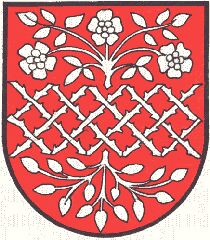Garanas: Difference between revisions
Knorrepoes (talk | contribs) m (Text replace - "|width="15%"|50 px|right |}<seo title="Wappen, Gemeindewappen" />" to "|width="15%"|50 px|right |}<seo title="Wappen von Österreich" />") |
Knorrepoes (talk | contribs) m (Text replace - "|}<seo title="Wappen von Österreich" />" to "|}<seo title="|}<seo title="Wappen, Gemeindewappen, Stadtwappen, Marktwappen, Österreich" />" />") |
||
| Line 3: | Line 3: | ||
|width="70%" align="center" |'''Heraldry of the World<br>Civic heraldry of [[Austria]] - [[Austria|Österreichische Gemeindewappen]]''' | |width="70%" align="center" |'''Heraldry of the World<br>Civic heraldry of [[Austria]] - [[Austria|Österreichische Gemeindewappen]]''' | ||
|width="15%"|[[File:Austria.jpg|50 px|right]] | |width="15%"|[[File:Austria.jpg|50 px|right]] | ||
|}<seo title="Wappen | |}<seo title="|}<seo title="Wappen, Gemeindewappen, Stadtwappen, Marktwappen, Österreich" />" /> | ||
'''GARANAS''' | '''GARANAS''' | ||
Revision as of 18:16, 1 January 2014
| Heraldry of the World Civic heraldry of Austria - Österreichische Gemeindewappen |
" />
GARANAS
State : Steiermark
District : Deutschlandsberg
Origin/meaning
The arms were granted on October 17, 1988.
Garanas is the name of a municipality on the mighty mountain ridge, the Koralpe, in western Styria. The name is very old, going back all the way to the really dark early Middle Ages. It implies the following: In times of war, a local road over the mountains had to be blocked by all sorts of things ready at hand: Trees, thorn bushes, what is called a "Verhau" or abatis. The name "Garanas" is singular in all of Austria, so an abatis was put into the arms.
When the land was settled, the farmers had to root out the wild birches (put in base of the arms) in order to cultivate the land (symbolised by the rose-bush in chief). The colours stand for the local landowners of the Middle Ages, the bishops of Salzburg and Brixen.
Literature : Image provided by Karl Palfrader (k.palfrader@aon.at), MStLA 39 (1989), p. 30

